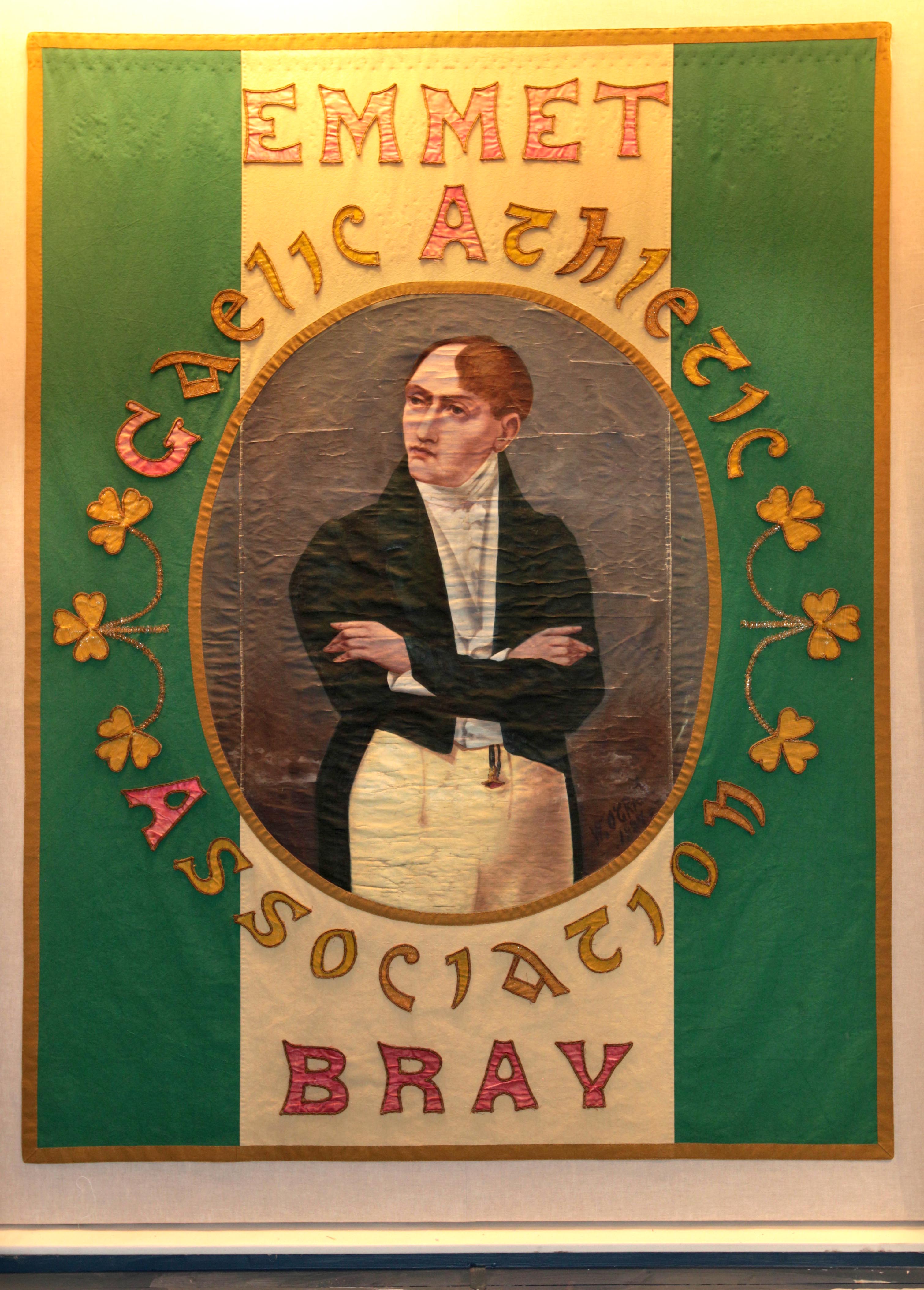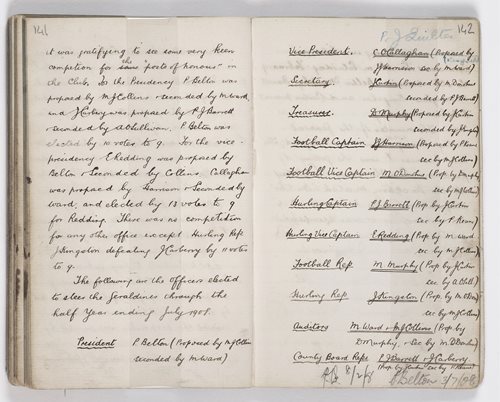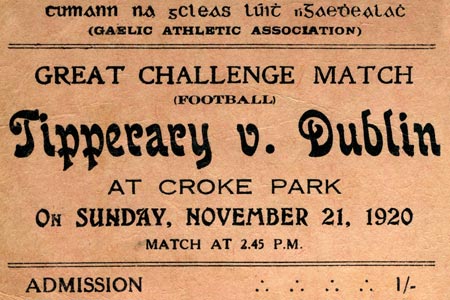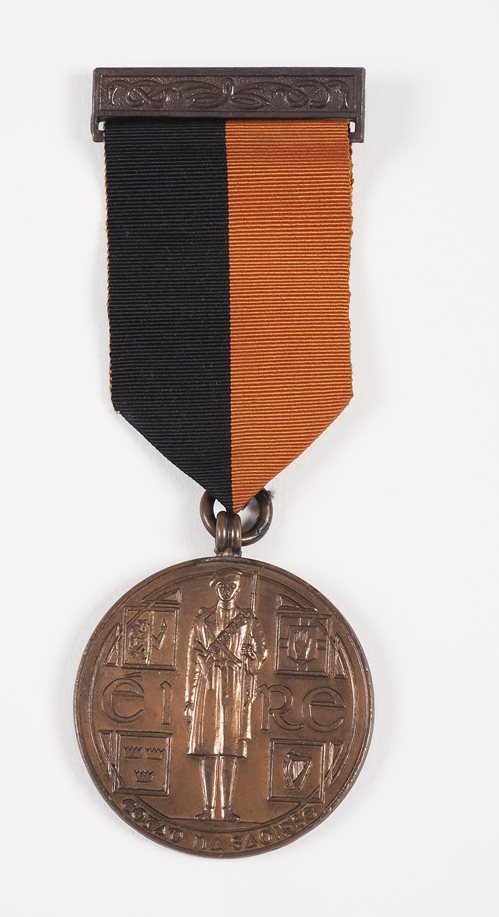A treasure trove of GAA and Irish History
Open since 1998, the GAA Museum has an impressive collection of artefacts - with almost 20,000 items in its collection across the museum and the archive.
The GAA Museum, like the sports it celebrates, is a constantly evolving space chronicling the history of the GAA and exalting the heroes and heroines of the games. The rich history of the games also reflects Ireland’s historical, cultural and societal evolution.
If you haven’t paid a visit in a while, it’s well worth another look – there’s probably a hidden treasure you hadn’t seen before.
Here is a glimpse at just 10 of our most fascinating artefacts on display.
Cusack’s Letter to Davin, August 1884
On 26
th August 1884 Michael Cusack penned a letter to Maurice Davin suggesting that a meeting take place in Munster
“in some central place in Tipperary on the 1st November next” as the
“Irish Association with its member must be formed before the end of this year”.
Just over two months later, seven men attended a meeting at Hayes’ Hotel in Thurles, at which the Gaelic Athletic Association was established.
The original letter is on loan to the GAA Museum from Pat Davin Walsh and on display as part of the museum’s permanent exhibition.
Bray Emmets Banner 1887
This banner is believed to be the earliest known GAA Banner. The Bray Emmets Club was founded in 1885 and in 1902 represented Dublin to win the All-Ireland Football final. The banner was professionally conserved in 2004 with assistance of grant aid from the Heritage Council.

Bray Emmets Banner
Invasion Tour Hurley
In September 1888 a group of over 50 hurlers, athletes and GAA officials embarked on a tour of the US to play exhibition matches and raise funds. Athletic and hurling exhibition matches were held in New York, Boston and Philadelphia. Bad weather, a bitter dispute between the two main athletic bodies in America and a Presidential election all resulted in poorer than expected attendances. A total of 17 members of the tour party stayed in America permanently. Although a financial failure, the 1888 Invasion Tour awakened interest in Gaelic games among Irish exiles.
A hurl used by Pat Davin on the Invasion Tour is on display in the GAA Museum.
Geraldines Athletic Club Minute Book, 1904-1909
In addition to playing Gaelic games, Michael Collins was also Treasurer and Secretary of the Geraldines Athletic Club, London. It was through the London G.A.A. that Collins met Sam Maguire who, reputedly, swore Collins into the Irish Republican Brotherhood (I.R.B.).
The pages on display, minutes for the 4th January 1908 meeting, contain the first reference to ‘MJ Collins’, who seconded two finance- related motions. Collins later became Minister for Finance in the First Dáil (1919).

Geraldines Athletic Club Minute Book
Proclamation of the Irish Republic
A new addition to the GAA Museum collection is a framed original of the Proclamation of the Irish Republic, one of the most important documents in modern Irish history.
Bloody Sunday Match Ticket
November 21
st 1920 is one of the darkest days of the Irish War of Independence and is known as Bloody Sunday.
Visitors to the GAA Museum can see an original ticket for the November 21, 1920 'Great Challenge (Football) Match' between Dublin and Tipperary at Croke Park in aid of the Irish Republican Prisoners Dependents Fund.
Earlier that day, members of Michael Collins’ Squad had assassinated 12 British spies, members of ‘The Cairo Gang’. The atmosphere in Dublin was tense as over 10,000 spectators assembled in Croke Park. With the game underway, British Forces entered Croke Park and within minutes 14 people lay dead and over 80 were injured. The fatalities included Tipperary player, Michael Hogan, and Jane Boyle, aged just 26 who had attended the game with her fiancé.

Bloody Sunday Match Ticket
Harry Boland Letter
A key figure in Irish republican politics, Harry Boland was also a hurler. This letter was written by him circa 1920 to Nellie (Ellen) Toomey. It describes the injuries he received in a hurling match and he makes his excuses for not accompanying her to a dance!

Harry Bolands Letter
Pádraig O’Caoimh’s War of Independence Medal
While the GAA Museum houses a vast collection of medals, this is perhaps one of the most interesting on display. This War of Independence medal was awarded to Pádraig O’Caoimh who served as General Secretary of the GAA from 1929 to his death in 1964.

War of Independence Medal
Jack Lynch's All-Ireland Medals
Jack Lynch’s six All-Ireland medals are on display in the GAA Museum’s Hall of Fame. The former Taoiseach and Cork dual star is the only player in the history of the Gaelic football and hurling to have won six consecutive All-Ireland medals – he was part of Cork’s famous four-in-a-row winning team from 1941-1944 and in 1945 he won the All-Ireland with the footballers before adding another hurling title in 1946.
Hurling Helmet Collection
The history of the hurling helmet is an interesting one and the evolution of this vital piece of equipment is largely credited to Mícheál Murphy who played hurling with University College Cork (UCC) and Blackrock, Cork from 1960 to 1973. In 1964 while playing a championship match Mícheál suffered a serious head injury which led him to wear and promote protective headgear for hurling. Among the helmets on display is the Spalding American Football helmet he imported in 1967. Murphy wore this while playing in the Fitzgibbon Cup.